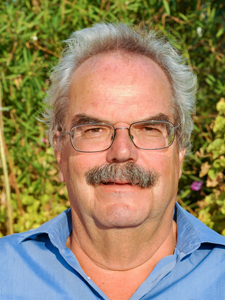Wall Paintings in Archaic Greek Temples: Kalapodi and Isthmia
Presented By
American School of Classical Studies at Athens
Greek Painting in Context - Webinar Series
Speaker(s)
Wolf-Dietrich Niemeier, German Archaeological Institute
Location
Webinar
* This webinar is part of our "Greek Painting in Context", webinar series.
If wish to see the entire program and register for our upcoming webinars, please click below.
About the Webinar:
In his seminal book Necrocorinthia of (1931), H. Payne argued for the existence of wall-painting in Archaic Greece. According to him, the decoration of the well-known Chigi Vase (ca. 650–640 BC) had followed prototypes in free painting. Evidence for this was the fact that the figures were coated with different mat colors like red, white, and shades of brown in an entirely new feeling for composition in the battle scene on the Chigi Vase which abandons the paratactic principle inherited from the Geometric period and implies the third dimension by the rows of overlapping soldiers.
Payne had prophetic abilities. After he had written Necrocorinthia, evidence for wall-painting has come to light in three Archaic Greek sanctuaries. A block of the first Heraion of Samos (ca. 675 - 670 BC) bears an incised sketch of a wall-painting representing a procession of men with spears. The Archaic temple of Poseidon at Isthmia had wall-paintings (ca. 650 BC) one of which featured a procession with horses. The most recent find of Archaic wall-paintings are the fragments of a battle scene (ca. 650 BC) similar to that of the Olpe Chigi from South Temple VII at the oracle sanctuary of Apollo at Abai (Kalapodi) in present day Phthiotis.
In this webinar, Professor Niemeier will discuss the relationships of these wall-paintings to contemporary vase-painting, the evidence provided by Pliny concerning Egyptian influence, and the importance of Corinth for Archaic wall-painting, as well as their function in the context of the sanctuaries in which they were found.
 About the Speaker:
About the Speaker:
Professor Wolf-Dietrich Niemeier is a well-known scholar whose work encompasses the ancient eastern Mediterranean from Anatolia to Crete and from the Bronze Age to the late Archaic. He has taught at Marburg, Freiburg, and Heidelburg Universities and served as Director of the German Archaeological Institute in Athens from 2001 to 2012. His archaeological fieldwork has ranged from Knossos to Miletos, and, most recently, to the important central Greek site of Kalapodi which has produced an exciting new series of temple paintings.